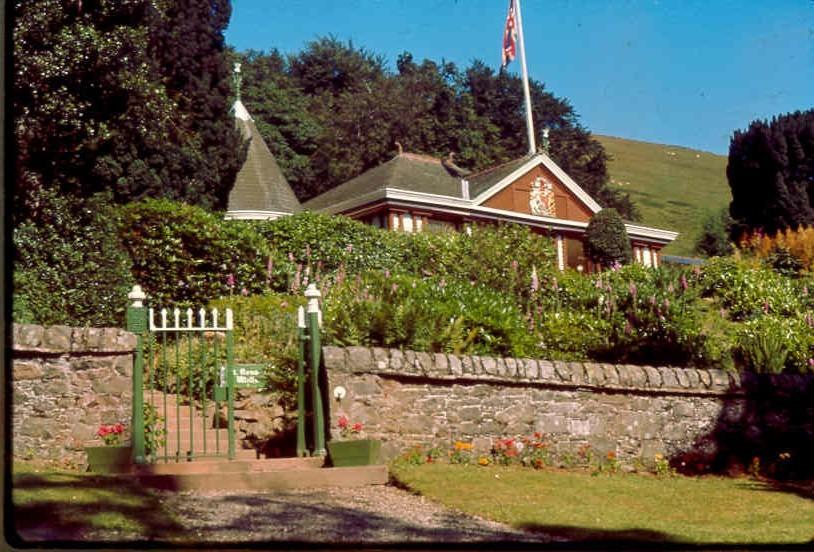THIS week, Ted McKie from Innerleithen Community Trust brings us the history of the town's famous St Ronan's Wells...
At one time the most famous landmark in Innerleithen, St. Ronan’s Wells nestles under the shoulder of Lee Pen whose peak is also a distinctive feature on the local topography.
By the close of the 18th century the exposed mineral spring known as the “Doo Well” had gained a wide reputation for its medicinal properties. It was in the 1820s, however, when Innerleithen was deemed to be the site of Sir Walter Scott’s fictional village of “St. Ronan’s”, the spa was subsequently renamed.
Visitor numbers increased dramatically and in 1826 the Earl of Traquair commissioned a “veranda” [photo 1] designed by the Edinburgh architect Playfair to provide shelter and seating for those arriving to “take the waters”.
This elegant structure fulfilled its purpose for the next seventy years but, in 1896, it was replaced by a larger building which retained the distinctive columns of the original pavilion.
The new St. Ronan’s Wells was owned by a local consortium trading as the St. Ronan’s Wells Mineral Water Company. As well as providing bathing facilities for both genders a bottling plant was also installed to manufacture the first carbonated mineral water to be produced in Scotland.
Prior to the grand opening in September 1896 a scaffold was erected down the steep slope directly in front of the Wells allowing Innerleithen photographer Thomas Colledge to capture the view from above at close range [photo 2]. This picture may have been taken to check the position before the event.
The third photograph, one of numerous postcard views of St. Ronan’s Wells, appears to predate 1913 when the Mineral Water Company, now owned by soft drinks manufacturer Harry Rawson of Edinburgh, received the Royal Warrant from King George V. St. Ronan’s Wells was the only business premises in Innerleithen to have its frontage adorned with the royal coat of arms, which still adds colour to the tympanum despite the warrant expiring in 1938.
By the time of the Second World War bottled water was no longer being manufactured at the Wells and the building was used to billet troops in the months leading up to D Day in June 1944.
The property was sold for £1 to Innerleithen Town Council in 1966, passing to Tweeddale District Council in the 1970s, under whose care the pavilion front was painted the now familiar blue and white of Innerleithen.
The fourth photograph taken around 1970 shows the frontage with a subtler hue and the coat of arms can also be plainly seen.
Today, St. Ronan’s Wells is a visitor attraction replete with local historical information and objects situated in attractive gardens in which to relax in the sunshine. Now part of Tweeddale Museums, Innerleithen’s historic spa is administered by Live Borders. It is also a venue for part of the annual Cleikum Ceremonies held during Games Week. Opening hours are 10 am to 1 pm and 2pm to 5 pm weekdays and 2pm to 5 pm on Saturdays and Sundays. Admission is free.







Comments: Our rules
We want our comments to be a lively and valuable part of our community - a place where readers can debate and engage with the most important local issues. The ability to comment on our stories is a privilege, not a right, however, and that privilege may be withdrawn if it is abused or misused.
Please report any comments that break our rules.
Read the rules here